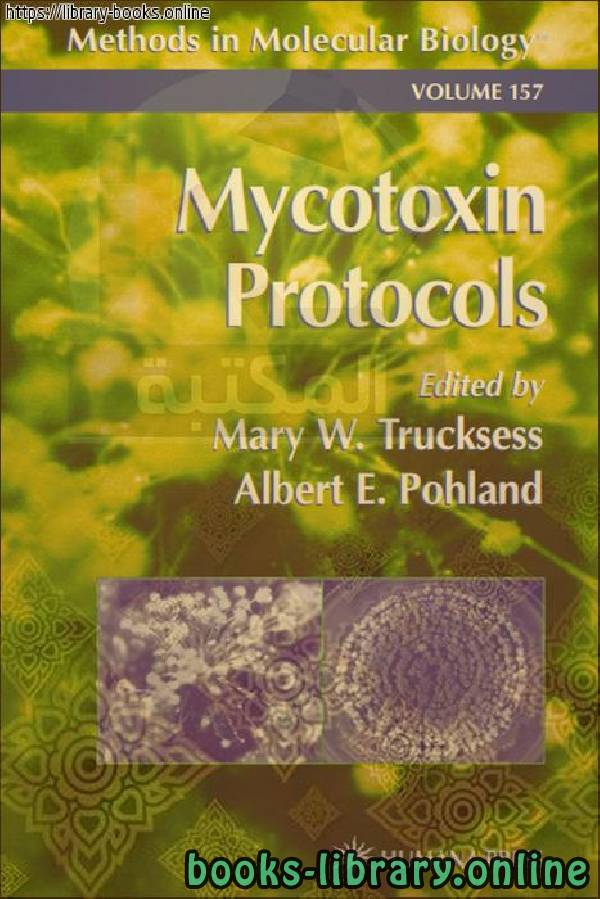📘 قراءة كتاب Mycotoxin Protocols أونلاين


Biologically
Biology is a natural science that is concerned with the study of life, its various forms and its function, how these organisms interact with each other and with the surrounding environment. The word biology in Greek is made up of two words: bio (βίος) meaning life. And loggia (-λογία) means science or study. Biology: the similarity of vegetation and animal cover on the edges of the African and American states, and the existence of the same fossil.
Branches of biology
Biology is an ancient science thousands of years old and modern biology began in the nineteenth century. This science has multiple branches. Among them are:
Anatomy
Botany
Biochemia
Biogeography
Biofisia
Cytology or cell science
Ecology or environmental science
نبذه عن الكتاب:
Mycotoxin Method Evaluation
An Introduction
Albert E. Pohland and Mary W. Trucksess
Mycotoxins are toxic secondary metabolites produced by molds, i.e.,
metabolites not essential to the normal functioning of the cells. Molds are ubiquitous in nature and are universally found where environmental conditions are
conducive to mold growth. Because molds are present in soil and plant debris,
and are spread by wind currents, insects, and rain, they are frequently found
in/on foods together with their associated mycotoxins (1).
The acute toxicity of mycotoxins has resulted in serious human health problems throughout recorded history (2). It has only been since the early 1960s,
when the aflatoxins were found to be carcinogenic, that it was realized that
some of these mold metabolites might have significant sub-acute and chronic
toxicity for humans. The public health concerns resulting from the finding of
mycotoxins, including metabolites in animal tissues resulting from transmission of mycotoxins present in animal feeds, and the observation of both acute
and chronic effects in animals has prompted the research effort focusing on
analytical methods development. Analysis for mycotoxins is essential to minimize the consumption of contaminated food and feed.
Method development and evaluation for mycotoxins is not a simple task.
Determining the concentrations of toxins in grains at the ng/g or parts-per billion levels required for the most important mycotoxins is difficult. The
approach generally followed consists of obtaining a relatively large primary
sample representing a lot, reducing it in bulk and particle size to a manageable
quantity, and finally performing the analysis on a small representative portion.
Sampling commodities for mycotoxin contamination follows the U.S.
Biology
Human biology
Who is the founder of biology?
The importance of biology
Areas of work in the field of biology
Theories of biology
Research on biology for the first grade of secondary school
Human biology
سنة النشر : 2001م / 1422هـ .
حجم الكتاب عند التحميل : 1.276 .
نوع الكتاب : pdf.
عداد القراءة:
اذا اعجبك الكتاب فضلاً اضغط على أعجبني و يمكنك تحميله من هنا:

شكرًا لمساهمتكم
شكراً لمساهمتكم معنا في الإرتقاء بمستوى المكتبة ، يمكنكم االتبليغ عن اخطاء او سوء اختيار للكتب وتصنيفها ومحتواها ، أو كتاب يُمنع نشره ، او محمي بحقوق طبع ونشر ، فضلاً قم بالتبليغ عن الكتاب المُخالف:
 قبل تحميل الكتاب ..
قبل تحميل الكتاب ..
يجب ان يتوفر لديكم برنامج تشغيل وقراءة ملفات pdf
يمكن تحميلة من هنا 'http://get.adobe.com/reader/'


 منصّة المكتبة
منصّة المكتبة 